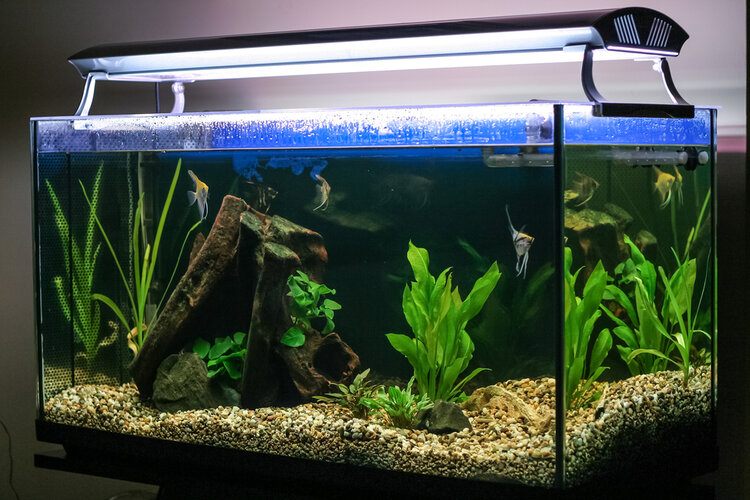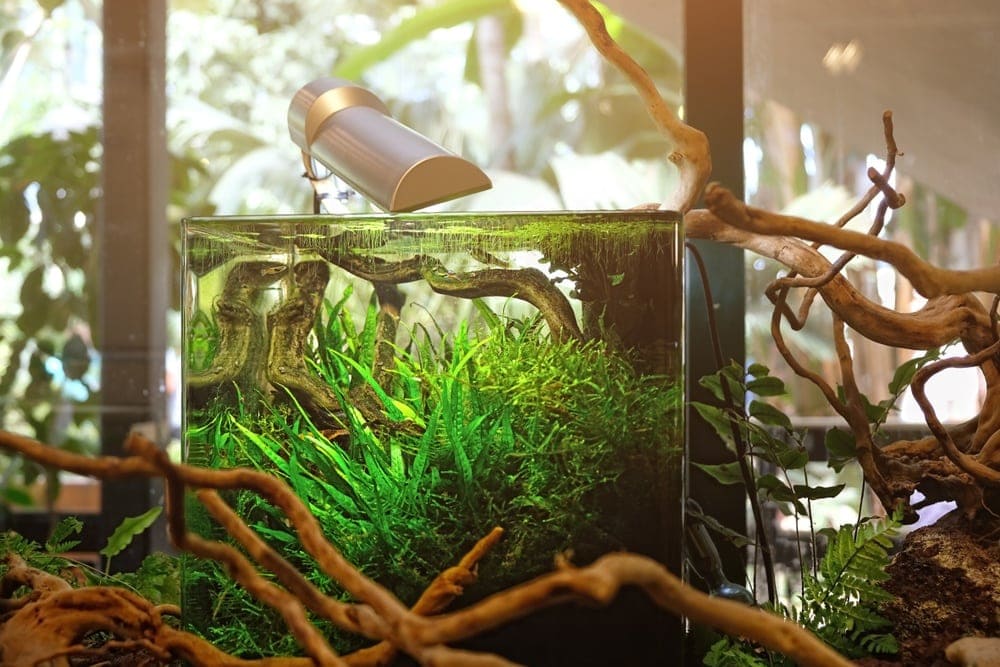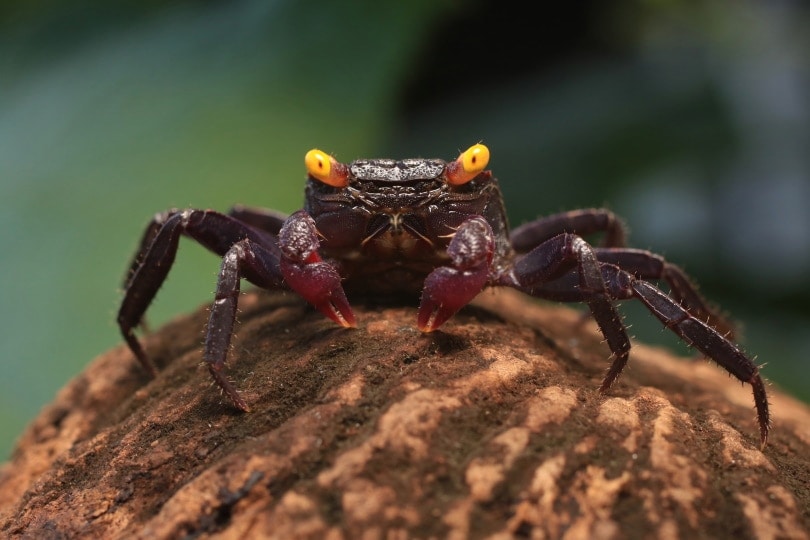How To Care For Platys: Water Conditions, Tank Mates & Breeding

Updated on
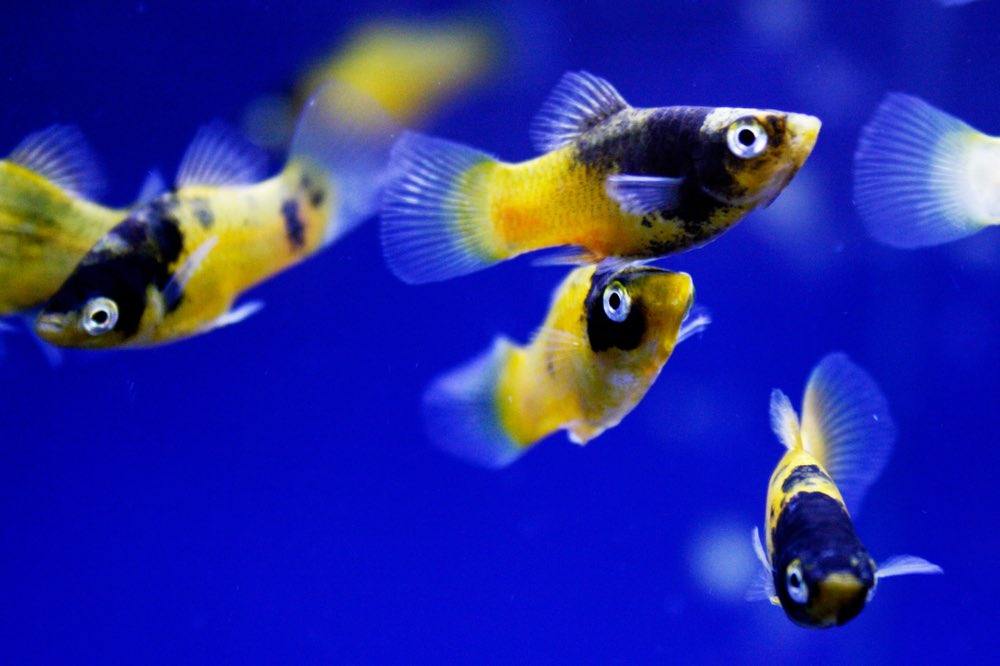
Platys are big fan favorites when it comes to home aquarium fish. They come in a variety of colorations, they are very peaceful, fairly hardy, and easy to care for beginner fish. On that note, we’re here today to talk about how to care for platys.
We are going to go over platy basics, the ideal tank, water conditions, tank mates, feeding, and breeding too. Let’s get to it!
About The Platy Fish

The Platy is a really neat and colorful little fish that is native to many parts of central and Southern America. Their official scientific name is Xiphophorus maculatus. They are also often referred to by many different names depending on their coloration.
These little guys come in a variety of colors such as black, blue, red, gold, any many other color combinations too. The female platy can grow to around 2.5 inches in length, but the males usually do not grow to more than 1.5 inches long. These guys are really peaceful fish that do well in community aquariums.
Tank / Housing Platys
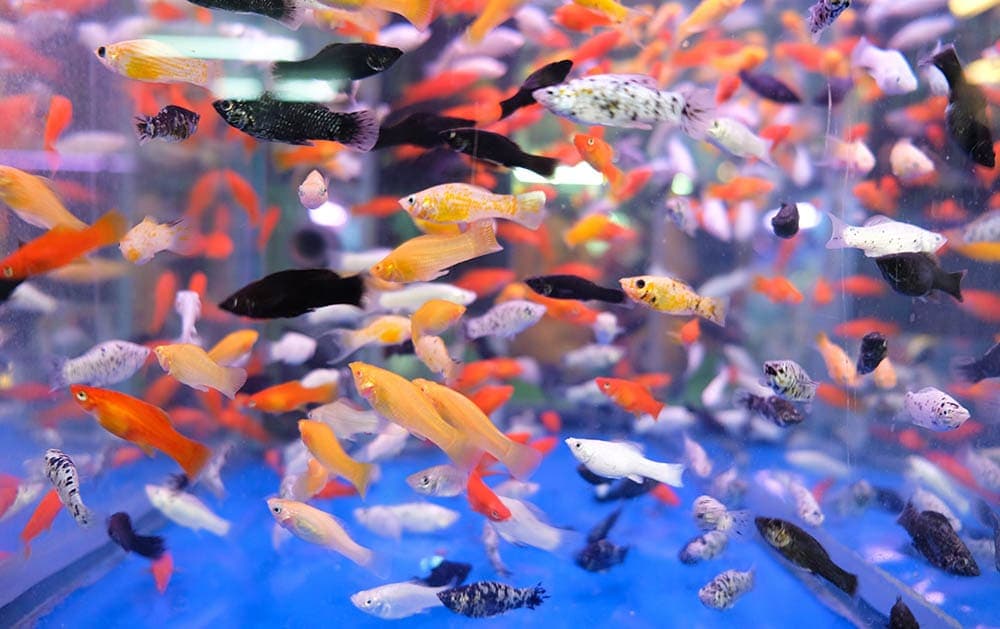
The first thing that you will need to get right to take proper care of your platys is to get the right tank. This is crucial for a number of reasons, mainly to give your platys enough room to live and to mimic their natural habitat. The most important thing to keep in mind here is the size of the tank you get.
For a handful of platys, so between 4 and 6 of them, a 10-gallon tank will be just fine (we have reviewed some good options here). As long as you keep the tank well maintained, have a few plants, and a good filter, a few platys will do fine in a smaller 10-gallon tank. The key in a smaller tank is to have a good filter and make sure that it is well maintained.
Smaller tanks get dirty quicker so this is important to keep in mind. That being said, platys are extremely prolific live bearing fish, which means that you will inevitably have lots of platy fish fry in your tank within a number of months. Since you can’t really sell newborn fry, and you probably don’t want to flush them down the toilet, the best option is to get a larger tank.
You can go for something like a 30 gallon tank. This way you can let the platy fry grow to full maturity before selling them. When it comes to the platy fry and filters, you need to make sure that the filter intake does not suck them up. Using mesh or sponges to cover the intake so solid things such as fish fry cannot get sucked in are some options to consider.
Just like other fish, platys do like plants, rocks, decorations, and that kind of thing. To mimic their natural habitat, you should put some plants in the aquarium that are native to central and South America. Some planted options like Amazon sword plants and Amazon Frogbit will do just fine. Platys are friendly fish, but they do like some privacy and they like to take cover in plants, so this is important (we have covered our top 10 aquarium plants on this post).
Also, platys are known to swim all over the tank, not just the top or bottom, so having a good open area near the top with lots of plants, rocks, and maybe even some caves in the middle is a good way to recreate their natural habitat.
The Ideal Water Conditions
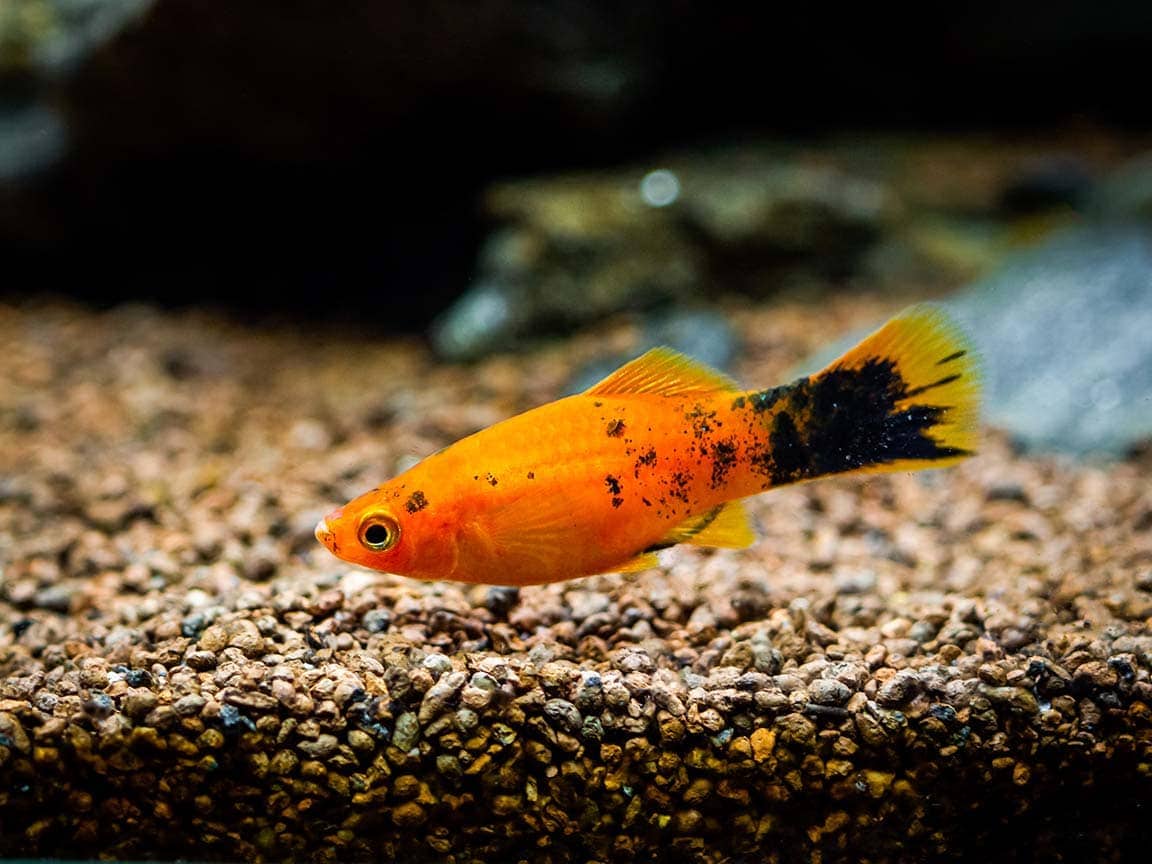
The next important thing you need to do in order to take care of platys is to meet the proper water conditions for them. Platys are pretty hardy and easy to take care of, so doing this is really not all that difficult, but there are a couple of things you need to keep in mind here.
First of all, when it comes to the temperature of the water, platys are warm water tropical fish, so you will probably need to get yourself a little heater. They are native to South America, which means that they like warmer waters, anywhere between 65°F–78°F (18°C–26°C), or in other words, the ideal temperature is a couple of degrees above room temperature.
In case you were wondering, these are freshwater fish, not saltwater fish, so the saline content in the water absolutely needs to be at a minimum. Next, when it comes to the hardness of the water, which is the amount of dissolved calcium and magnesium in the water, platys prefer the water to be a little on the soft side. However, as we said, these little guys are fairly hardy, so a water hardness level (dH) between 10 and 25 will do just fine.
Related to this is the acidity of the water. Platys prefer the water to be either neutral or slightly basic. A pH level between 7 and 8 will do just fine, with the ideal being around 7.5 (if you need help reducing pH then see this guide for help). Finally, just like other fish, platys do not do well in waters with lots of toxins, ammonia, nitrates, nitrites, and other unwanted substances. In other words, be sure to get a good filter that engages in all 3 major types of water filtration, those being mechanical, biological, and chemical.
Ideal Tank Mates
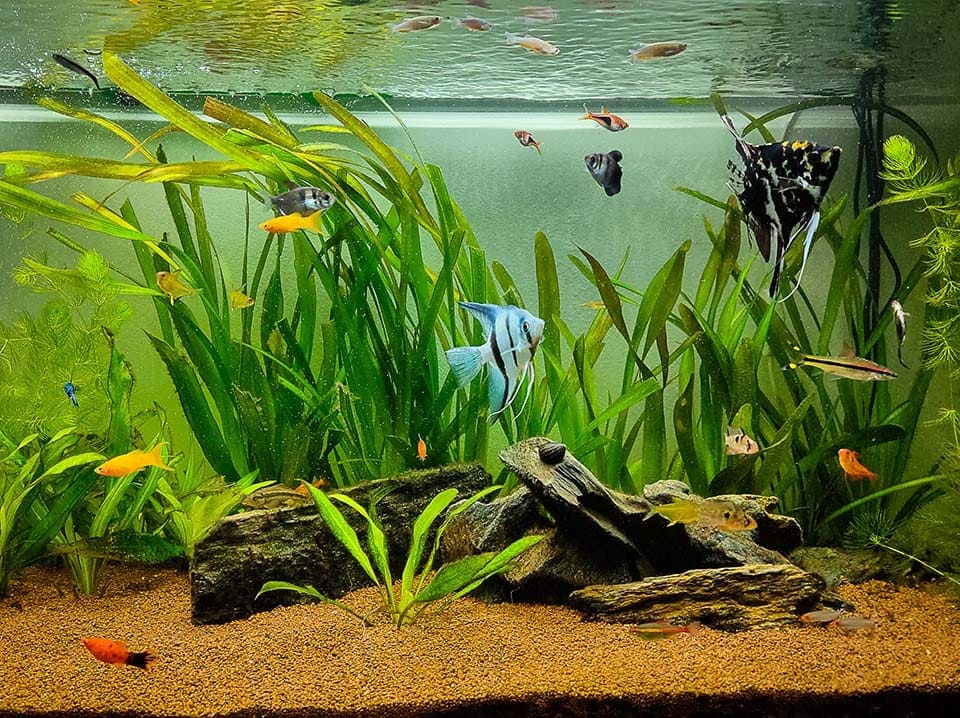
As we mentioned before, platys are very peaceful and do great in a community setting. As long as you don’t keep them with fish that are much larger and more aggressive, most will be just fine. Just be sure not to house them with fish that will attack, bully, or eat your platys. Small snails and crustaceans are good options to go with as well.
Feeding
Platys are generally known to be carnivorous when in the wild, but they do eat some plant matter too. Their diet can range anywhere from 60% animal protein and 40% plant matter to 90% animal protein and 10% plant matter. As long as you stay within those numbers when feeding your platy, it will be perfectly happy. In the wild, these little guys tend to eat small insects, insect larvae, small crustaceans, some plants, and even algae too.
You should aim to reproduce this diet as closely as possible for the healthiest fish. You can make a basic meal plan consisting mostly of flake and pellet food as long as it is designed for fish that need lots of protein.
However, you should also feed them other foods too. They love live foods such as mosquito larvae, fruit flies, bloodworms, daphnia, brine shrimp, and other small insects. If live foods are not an option for you, you can always try the freeze-dried option too.
Freeze-dried foods have the advantage of having a much longer shelf life and a much lower risk for passing on disease and parasites to your platys. The freeze-dried version of any of the above live foods will do just fine. Platys might also end up nipping on some of the plant matter in your tank, plus they might eat some algae too.
Breeding
Unlike many other aquarium fish out there, breeding platys is really easy. In fact, getting them not to breed is actually the hard part. As we mentioned before, these little guys are extremely prolific livebearers, so if you have them in a community with some males and females, you can rest assured that you will have platy fry swimming around, probably sooner rather than later.
Also, unlike other fish, you don’t need to do anything special to get these guys to breed. You don’t need to change the water temperature, set up a separate breeding tank, or anything like that. As long as you have male and female platys, they will most definitely breed.
One thing to keep in mind here is to keep more females than males. A ratio of 2 to 1 or even 3 to 1, females to males, is the ideal. The reason for this is simple, which is because male platys love to breed, a lot. If you have an equal number of males and females, the males will wear out the females, often leading to disease and even death.
On a side note, platy parents will eat their fry, almost without a shadow of a doubt. The fry will stand a better chance in a heavily planted aquarium, but only slightly. If you don’t really want the fry, you can leave them in the tank to be eaten, but if you want to keep them, you will have to remove them from the tank before they get eaten.
Conclusion
Platys are really cool fish no doubt. If you follow our tips on feeding, the tank, water conditions, and tank mates, you will have no problem creating a happy and healthy community of platys.
Featured Image Credit: Richelle Cloutier, Shutterstock

